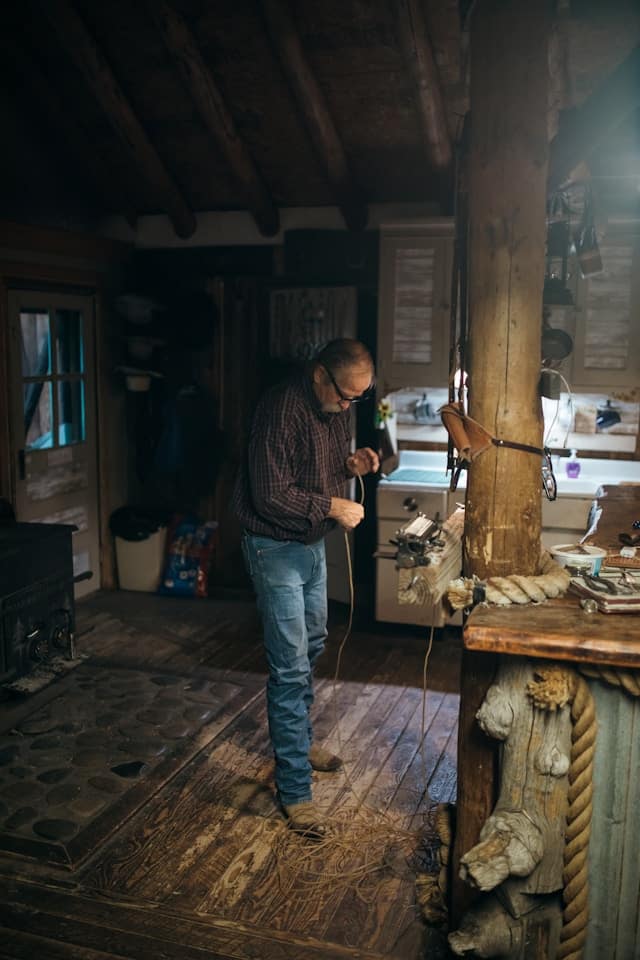What’s the Ideal Ergonomic Setup for a Craftsperson’s Home Workshop?

Crafting, by definition, involves creating items by hand. This can range from furniture to jewelry, from pottery to clothing – the list is infinite. But regardless of what you’re making, there’s one aspect of crafting that’s often overlooked: the workspace. An ergonomic setup in your home workshop can do wonders for your productivity, and, more importantly, your health. Today, we delve into what makes an ergonomic workspace and what tools will help achieve it.
Designing Your Workspace
The first step in creating an ergonomic home workshop is design. This involves analysing the space at your disposal and arranging the tools and workstations in a manner that enhances efficiency while reducing the risk of injury.
Cela peut vous intéresser : What’s the Most Effective Way to Incorporate a Solarium for Plant Growth?
To start, observe the natural light available in your space. Position your workbench close to a window if possible. Natural light reduces eye strain and helps you see finer details. If natural light isn’t sufficient, introduce lamps or overhead lights that replicate daylight.
Measure the height of your workbench. It should align with your elbow when you stand, allowing you to work comfortably without straining your back or neck. If you spend long hours seated, consider investing in a height-adjustable desk. This will allow you to switch between sitting and standing, reducing the risk of musculoskeletal disorders.
Sujet a lire : How Can You Design a Small Space for a DIY Pottery Studio at Home?
Keep the tools you use most frequently within easy reach. This reduces the time spent searching for them and minimises excessive stretching or bending. Tools that aren’t used as frequently can be stored on shelves or in drawers.
Choosing the Right Tools
The tools you use are just as important as the space in which you use them. They need to be effective, of course, but they also need to be comfortable to use.
Ergonomic tools are designed to fit the user’s hand and reduce strain on the joints. While shopping for tools, look for features like padded handles and trigger locks. Lightweight tools are also easier to handle for extended periods of time.
When it comes to power tools, opt for cordless models whenever possible. Cords can be a tripping hazard, and they limit your ability to move around your workspace.
Always wear appropriate personal protective equipment (PPE) when working. This includes safety glasses, gloves, and ear protection. PPE will keep you safe and prevent long-term damage from exposure to dangerous materials or loud noise.
Organizing Your Workspace
An organized workspace is a productive workspace. Keeping everything in its proper place can save you a lot of time and frustration.
Start by grouping similar tools together. This will make it easier to find what you need when you need it. Store sharp tools in a safe place where they won’t accidentally cause injury.
Label everything. This might seem like a lot of work initially, but it will save you time in the long run. It’s also a good idea to clean your workspace regularly. A clean workspace is not just more pleasant to work in, it’s also safer.
Prioritizing Comfort
Comfort should be at the forefront of your home workshop design. Your health and wellbeing are just as important, if not more so, than the crafts you produce.
Invest in a good chair if you spend a lot of time sitting. It should be adjustable and provide good lumbar support. Also, consider an anti-fatigue mat if you spend a lot of time standing.
Remember to take regular breaks. Even with an ergonomic setup, working for extended periods of time can cause strain and fatigue. Stand up, stretch, and rest your eyes every so often.
Adapting to Change
Finally, remember that your needs may change over time. Be prepared to adapt your workspace and tools as necessary. Regularly assess your setup and make improvements wherever possible.
Consider involving a professional ergonomist if you’re struggling to create a comfortable workspace. An ergonomist can assess your needs and provide advice tailored to your situation.
In conclusion, a well-designed, ergonomic home workshop can increase productivity and help prevent injuries. Remember to prioritize your comfort and don’t be afraid to make changes as necessary. After all, your workshop should be a place of creativity and joy, not discomfort and strain.
Utilizing Space and Equipment
Making the most out of your living space is crucial when setting up a home workshop. If you’re lucky enough to have a dedicated room, this can give you ample space to work, store tools, and move around. But even if you’re working in a smaller area, there are ways to optimize the space.
The best place to start is with a workbench of the right height. As mentioned before, your workbench should align with your elbow when standing. This is a tip straight from renowned craftsman Charles Lewton, who emphasized the importance of a well-arranged workspace. Also, consider the Owl Stool, an adjustable stool specifically designed for craftspersons.
Another critical aspect of your home workshop is the equipment you use. Power tools are often necessary for craft work, but they must be handled with care. Cordless tools powered by lithium-ion batteries are a sound investment, as they’re heavy duty yet portable and reduce the risk of tripping over cords.
Your choice of hand tools is equally important. Lewton Brain, an expert in the field, recommends investing in high-quality equipment that reduces strain on the hands and body. Smaller tools equipped with padded handles and trigger locks can help in this aspect.
Remember, it’s a good idea to keep things organized. Keeping your tools and equipment in their designated places can reduce the risk of accidents and make your work process smoother.
Conclusion: Creating an Ideal Workspace
Setting up a well-sequenced, ergonomic home workshop may require some time and effort, but the benefits are worth it. From the proper use of natural light to maintaining the correct workbench height, every detail contributes to creating a workspace that enhances productivity while safeguarding your health.
It’s important to keep your most frequently used tools within easy reach and store the others safely to minimize unnecessary movements. A well-organized space promotes efficiency and reduces the chance of accidents.
Your comfort should be a top priority. Investing in a good chair with lumbar support, using an anti-fatigue mat, and taking regular breaks will go a long way in protecting your health.
Lastly, remember that your workshop is a living space that can and should adapt to your changing needs. Whether it is upgrading your tools, adjusting your workspace layout, or seeking the help of a professional ergonomist, always be open to improvements.
In conclusion, the ideal ergonomic setup for a craftsperson’s home workshop is one that combines efficiency, safety, and comfort. It’s not just about having a dedicated room or the best tools, but about creating a space where you can work happily and healthily. After all, as the privacy policy of every good craftsperson should state: "My workshop, my sanctuary".
